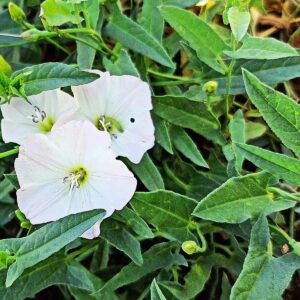Can you imagine a dandelion history lesson in the future? Perhaps teachers will tell stories about dandelions like this:
“In today’s history lesson, we’ll examine a very strange time in human history – the early 2000s.
During this troubling period, humans on the planet Earth had collectively decided that this yellow flower was a scourge.

Taraxacum, more commonly known as dandelion, was a perennial, herbaceous plant that grew on Earth. It had long taproots that helped naturally aerate the soil. The entire plant was edible, and it had many medicinal purposes.
However, major chemical companies spent millions of dollars on advertising to convince consumers that dandelions were bad.

During this same time period, many people grew large patches of non-native grass in their yards. Although the natural habit of plants on Earth was to diversify, the humans spent long hours removing dandelions and tending their large swaths of fescue grass.
Lawns were a lot of work. They weren’t practical or sustainable, but most people still had them because it was the norm.
A yard of bright green, weed-free grass was a status symbol at the time. Some lived in neighborhoods with HOAs that called dandelions “noxious weeds” and required their removal.

Water was becoming scarce. Droughts were increasing worldwide at a rapid pace, yet inexplicably the humans continued to use precious water on their large swaths of turf.
The humans rarely enjoyed or even stepped on their yards of grass.

They maintained them mostly for show.

The media outlets of this era regularly reported the alarming facts that bee populations were dwindling rapidly. In 2017, Time magazine reported that 700 North American bee species were headed for extinction.
Dandelions and Bees
Dandelions were a natural pollinator that bees loved, but for some reason this did not stop the humans from trying to eradicate the yellow flowers from their turf patches.

Water supplies were becoming increasingly polluted in the early 2000s.
Weed killers were big business. Humans purchased billions of dollars of toxic chemicals to eradicate the dandelions, clover, crabgrass and other plants that naturally sprouted up in their lawns. The chemicals seeped into the Earth’s surface water, groundwater and soil. Herbicide residue was found in many foods.


The weedkiller glyphosate was linked to cancer and other diseases in humans, but the chemical companies funded research studies that refuted the claims.
The chemical companies financed like-minded politicians through political action committees, and hired lobbyists to weaken and eliminate restrictions on toxic herbicides.
Despite the widespread adoption of the internet around the turn of the 2000 millennium, it was a period of great misinformation and the people had not yet figured out how to discern the truth.
While we may never fully understand the mistakes and motivations of the Earth people of the early 2000s, we can learn from their catastrophic errors in judgment and take better care of our planet Kepler-186f.
We must remember to always demand clean, independent scientific research. We must remember to vigorously keep dark money out of politics. We must always hold our elected officials accountable to preserving our planet’s resources.
Let the early 2000s always remind us that seemingly innocuous actions by a large number of people can result in terrible consequences.
Let history remind us to seek and revere the truth.
And let us never forget the dandelion.”

Lawn photo by Sir Mildred Pierce.
P.S. I’m quite fond of dandelions, but bindweed is another story. It chokes our plants and can be quite invasive, which is why I am always researching how to get rid of bindweed naturally.
P.P.S. If you enjoyed this article, you might also enjoy “How to Banish Green Guilt.“

Eliza Cross is the creator of Happy Simple Living, where she shares ideas to help busy people simplify cooking, gardening, holidays, home, and money. She is also the award-winning author of 17 cookbooks, including Small Bites and 101 Things To Do With Bacon.





Eliza, I was thinking of this very topic when I was pulling “noxious weeds” in our HOA-compliant yard today. So I read a few articles on the subject. It appears that regional weeds not only allow a healthy insect life above ground, but also they promote a healthier micro-organism environment below the surface. When my husband and I downsize to our little retirement home, we want a neighborhood that will allow a natural area on our lot for bees and butterflies. And I’m SCARED of bees, but I understand how important they are for our ecosystem. Thank you so much for this post!
Hi, Priscilla,
I love your thinking as you look for your next home; a more natural habitat would be wonderful. I, too, pull the dandelions from our front lawn and daydream of a more unstructured yard. Thanks so much for sharing your findings about regional weeds!
xo,
Eliza
Eliza – – I love this post. I just drove past a neighbor’s house and thought how lovely it was to see all those wonderful yellow flowers in their back yard. Why is it that we don’t appreciate the dandelion more? From here on, I will not remove them from my gardens or my lawn. They are so much more useful and good looking than other weeds. Thank you!! Lyn
Dandelions will always be welcome on my “lawn”. I love how bright and happy they look and I have noticed they are quite popular with the bees. Once, upon seeing my dandelion infested front yard, my father-in-law commented, “You like dandelions?” and I just gave him a big smile and replied, “Why yes I do.” Now, my veggie and flower beds, it’s a different story – any dandelion that happens to wander into those areas is going to get pulled out by hand.
Oh my! I do hope that at least some of us are able to escape to Kepler-186f.
I fear what’s left of my “lawn” has been infected with a fungus, so I’ve been busy digging the remains out – as well as miles of bindweed roots. My plan is to fill the yard with flowers & plants for the bees. We’ll see how it goes…